With just 22 goals scored in the first French league 2022/23, AC Ajaccio are currently the worst attack in the league and together with Sampdoria are the worst attack in the European’s top-five leagues.
In his 13th season as AC Ajaccio’s head coach, Olivier Pantaloni is already a club legend. Last season, he made a remarkable achievement by promoting his team from the second to the first tier of French football.
Pantaloni’s teams are more known for their defensive cohesion and organisation than their offensive menace. In fact, last season in the French second tier, Ajaccio were surprisingly promoted with just 39 goals scored, but on the other side, they were the best defence with only 19 goals suffered in 38 games.
However, this season has been a nightmare for the French collective where they were defeated 25 times and achieved only six victories and five draws in the top-flight. Additionally, as we mentioned earlier, they have scored just 22 goals and conceded a huge number of 71 goals, consequently becoming the team in the league with the worst goal difference: -49.
In this tactical analysis, we will lay over Ajaccio’s offensive process and try to unveil what were the main reasons for their failure in this aspect.
Preferred formations
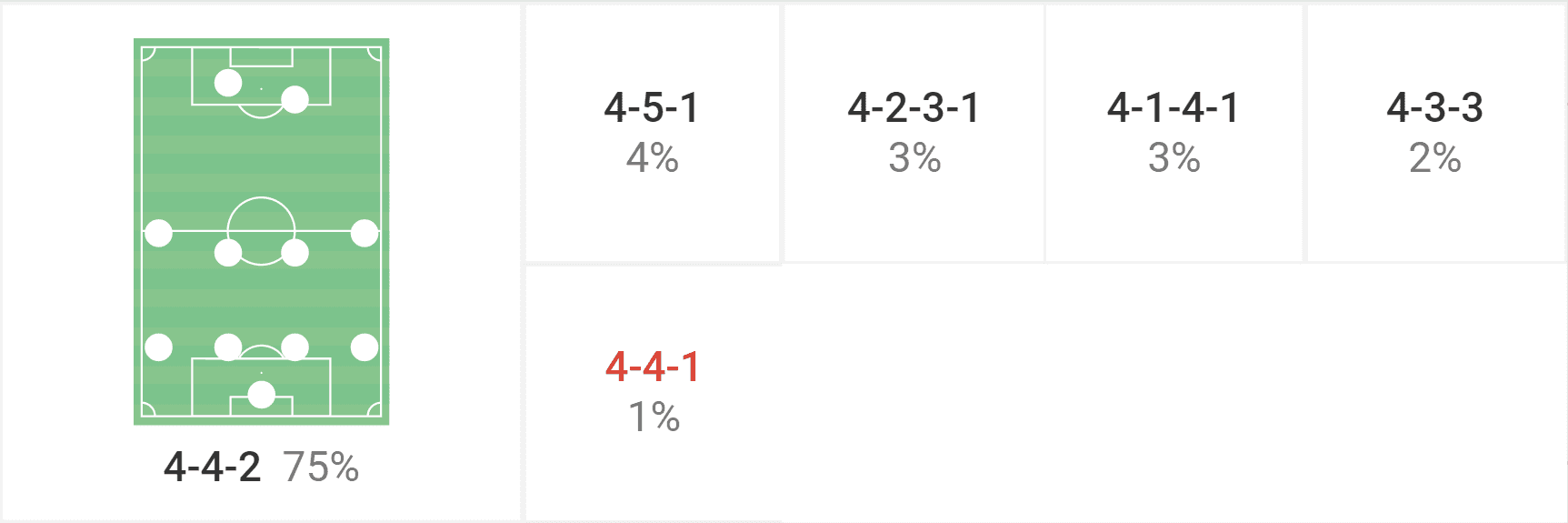
75% of the time, the French collective aligned in a 4-4-2 both offensively and defensively. However, as usual in these types of formations, the right and left midfielders join the attack, forming a 4-2-4.
However, Olivier Pantaloni ultimately has made some changes where one of the attackers joins the midfield, possibly to help link the two sectors. The Ajaccio head coach also makes alterations within their formation if they face a much stronger team, which was the case with Paris Saint-Germain, where they aligned in a 4-3-3.
Additionally, with an average age of approximately 28 years old, Ajaccio’s squad is the oldest in the first French league.
Meanwhile, Youcef Belaïli is the player with the higher offensive impact with six goals and five assists, followed by Mounaïm El Idrissy who scored five times and assisted once. Belaïli normally operates as a left midfielder, while El Idrissy performs as a striker.
Struggling in winning and maintaining possession
As a result of our analysis, we found out that their incapacity to win and maintain possession is one of the most important and decisive reasons that led Ajaccio to a flawed season, especially offensively, and it’s related to some tactical options, which we are going to develop in this piece.
The French side has on average 44.57% of ball possession during the current season, which reveals such incapacity of having the ball and consequently, it is more likely for Ajaccio to be dominated by the opponent. Another stat that we also found interesting is related to the average number of passes made per game by Ajaccio (359) in comparison with their opponents, which reveals that this French side makes almost 100 passes less than the opposition.
Firstly, they prioritise a more direct game, and there’s nothing wrong with this strategy if they made some adjustments. In fact, there are teams who play direct football and still are more effective and successful than some other teams who promote a short passing circulation.
However, Ajaccio do not belong to one of those teams and here are some reasons, which we believe contributed to their lack of success in playing direct football.
There are two important biological aspects that negatively influence their game in possession. Firstly, they are not a very physical team, especially in the midfield, which is important to win those second balls. Secondly, as we mentioned, Ajaccio are the oldest team in the league, and obviously, it has an impact on a game in which most of the time is fractured. In fact, defensive actions like aerial balls or even transitions were much more well-taken with a younger and more physical team.
Another factor is the midfielders’ positioning when the defenders opt to play long. As a matter of fact, we noticed that there was a big gap between the midfielders and the attackers, which make it less likely for Ajaccio’s men to win the second ball, due to the numerical inferiority in that zone.
As an example, in the image below, we can see the gap that we mentioned, and in case of the second ball falls into that coloured area, it is more likely that the defender wins it rather than Ajaccio’s midfielders. If the two midfielders were deeper on the field, the gap wouldn’t exist, and they would increase their odds of winning that second ball.
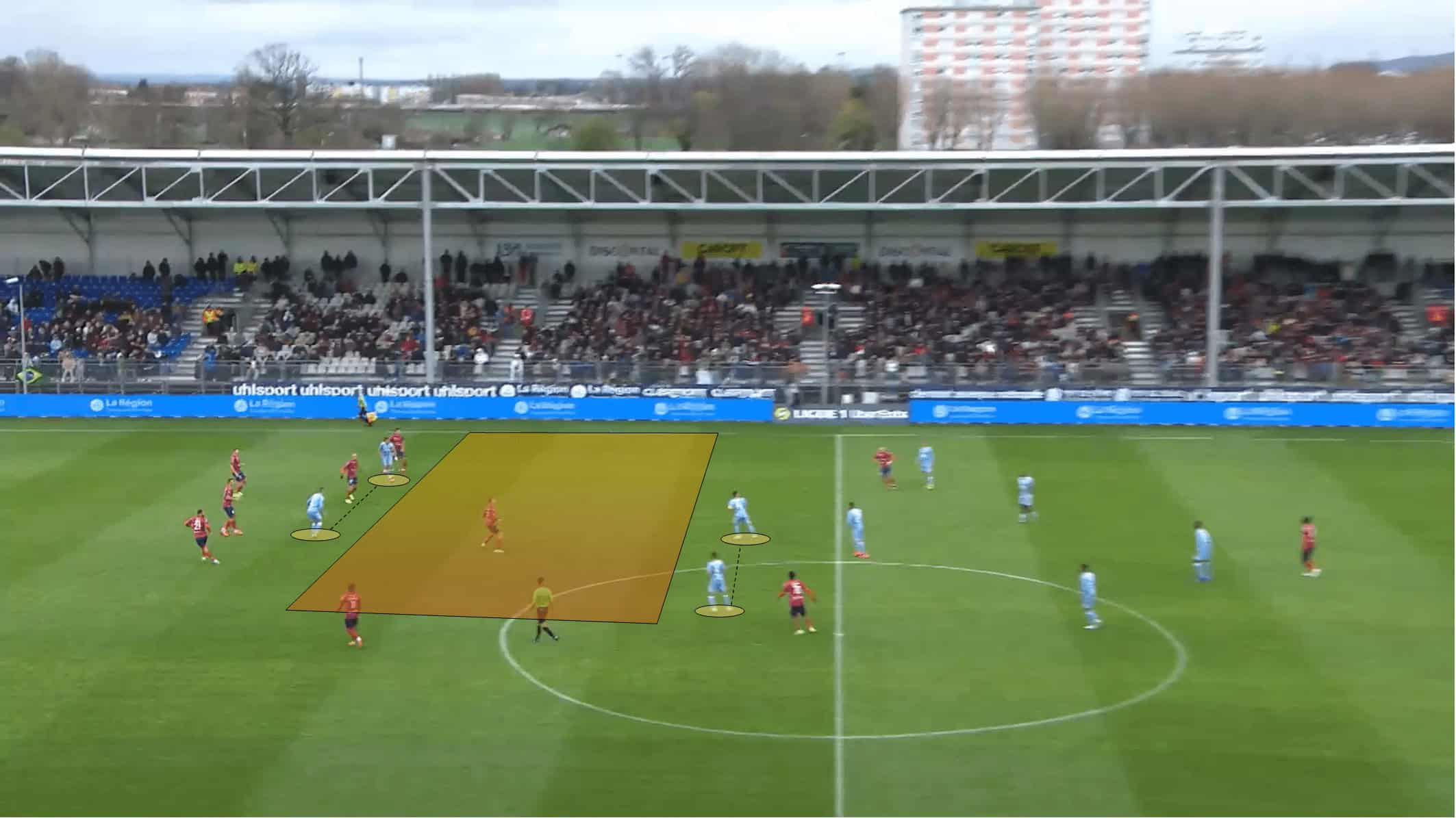
Let’s now have a look at some of Pantaloni’s tactics, that can obstruct the creation of opportunities to score. The first aspect is related to the function of Ajaccio’s fullbacks who tend not to overlap the opposition’s backline, assuring their team defensively. Although this strategy increases defensive awareness, especially in transitions, it also significantly decreases the number of opportunities created on the flank.
On the one hand, the side midfielder has fewer options to play and as it goes, has a higher probability to make a bad decision and lose possession. On the other side, the fact that the fullbacks had less involvement in the attack also decreased the number of opportunities created on the flank, especially through crosses near the end line.
Even though Ajaccio is well-ranked in the percentile of crosses taken per 90 minutes (66.6), due to the bad occupation of spaces inside the box, normally these crosses are not completed by the attackers. In fact, they are ranked in the 5th percentile concerning entries in the opposition’s penalty area. As evidence, we suggest you look at the below image which shows a numerical inferiority of only two players (without the ball carrier) against five of the opposition’s defenders.

Besides that, Ajaccio’s struggle in maintaining the ball is related to the lack of players inside the box since Pantaloni’s team block is way down in the field most of the time. In the image below, we have a heat map of Ajaccio during the current season and, again, it’s the lack of presence in the opposition’s box is visible.
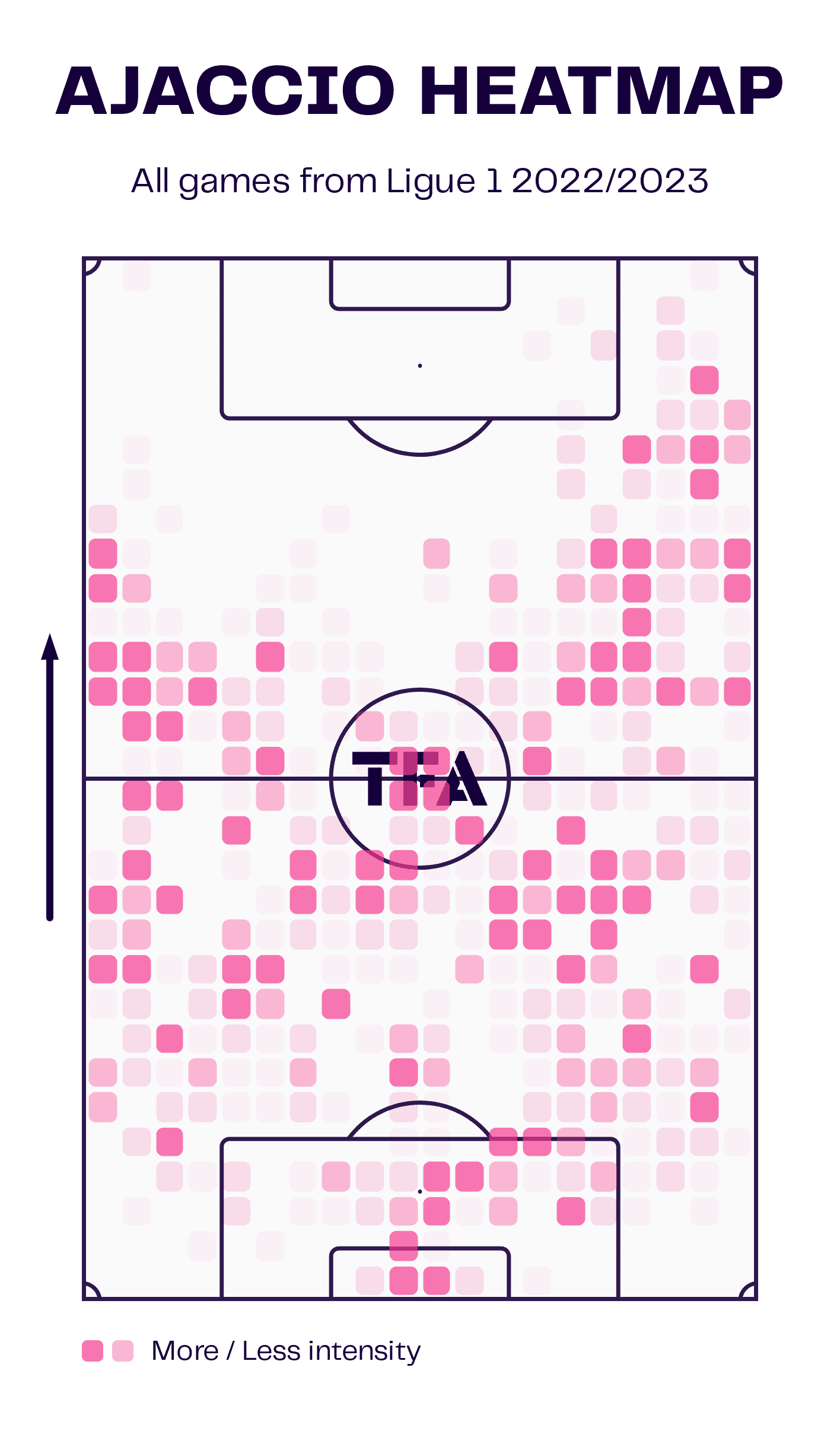
Counterattacks are another good way to hurt the opposition if the attacking team meet some conditions such as speed, positioning and decision-making and, in this case, Ajaccio has some issues in all of these three aspects.
Regarding positioning, we noticed that, since the fullbacks are descended on the pitch, the midfielders should be wider and deeper. Mobility is also an important tool to misguide opposing pressing plans, and Ajaccio seems not to take advantage of that with very static positioning in all the sectors. For instance, in construction, the midfielders could drop more frequently to the defensive line and the fullbacks would ascend on the pitch, or even the fullbacks explore space inside like Mikel Arteta‘s Arsenal.
Besides that, as we previously said, there is a large gap between the midfield and attack lines, and in this way, the attackers struggle in the absence of elements which should support the transition. Loss of possession is a common consequence whenever the attackers aren’t given more solutions at that moment of the game, as we can see in the image below.
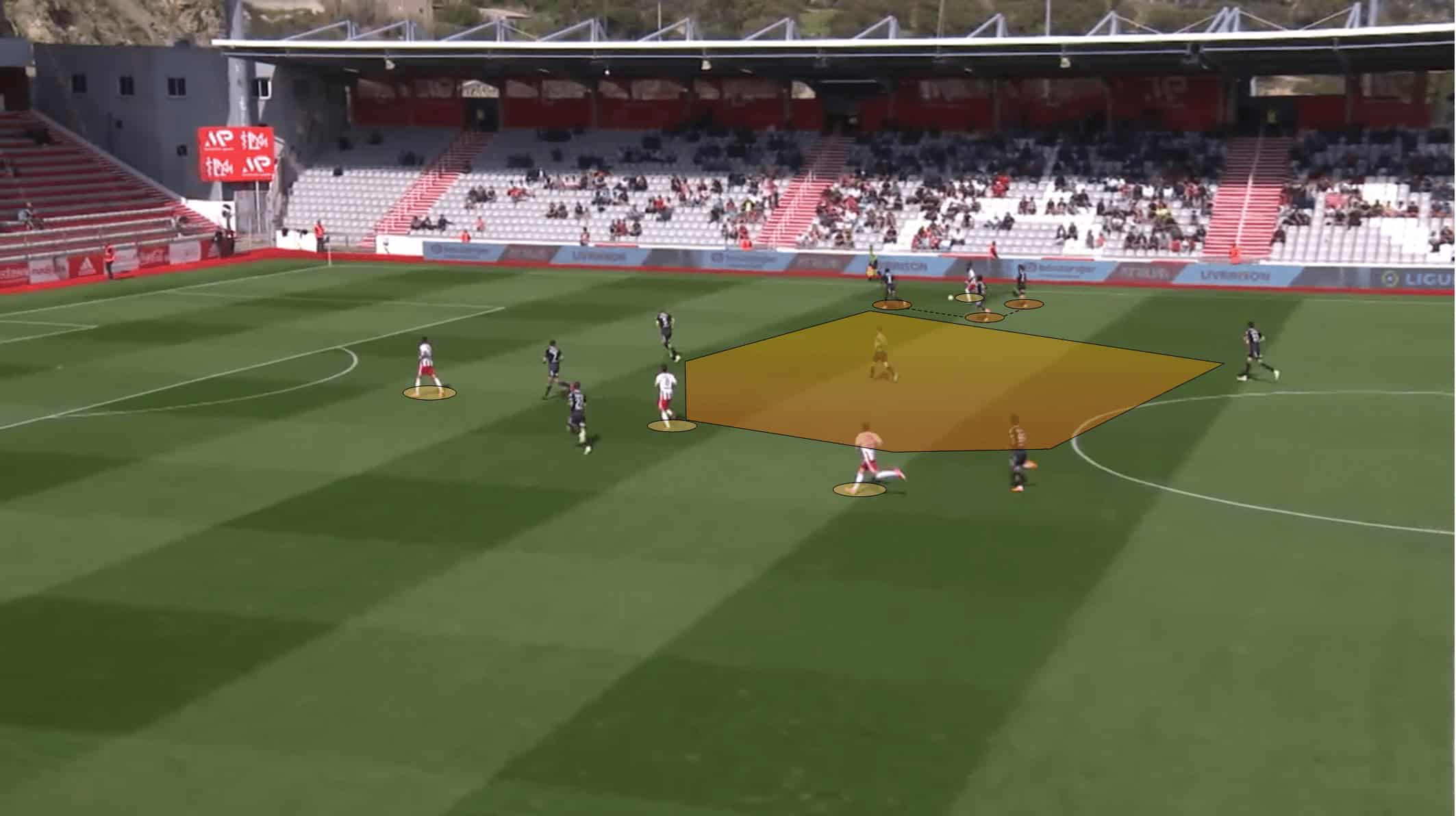
Decision-making is also a very important and decisive factor in the offensive process in general and Pantaloni’s men show some difficulties in this chapter. In fact, Ajaccio are, again, below the league average in this parameter, with almost 20% of inaccurate passes, affecting deeply their offensive approach, both in organisation and in transition.
Let’s see two examples of bad decision-making in two different scenarios, firstly in organisation and then during a counterattack.
In the below image, we can see the midfielder open and with at least three different options to play. However, he chooses the most difficult one, a long ball to the attacker. These are the moments that Ajaccio should maintain the ball and organize themselves, yet the players seek these through balls which the majority of the times are not efficient.
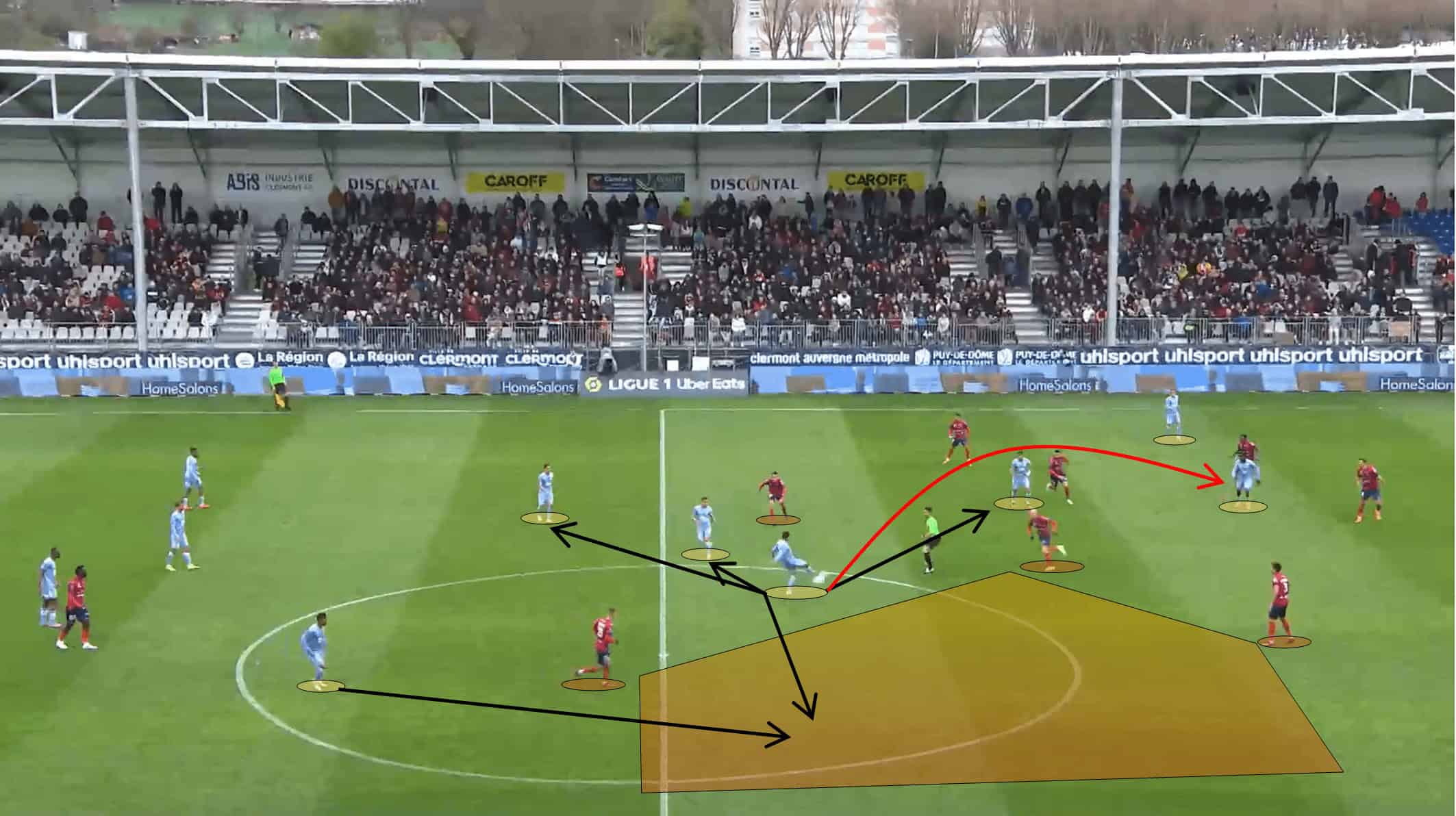
In short, this French side would benefit if they played more articulated rather than opting for a direct game which causes a game of transition, a type of match which does not benefit Ajaccio.
In this sequence of images, we have other examples of poor decision-making, this time in a counterattack. A simple through ball into that coloured space would put the attacker one vs one against the goalkeeper, and the chances of scoring a goal would be significantly high. However, the player preferred to go solo into the flank where the defender successfully recovered the possession, and suddenly a big chance through a counterattack was wasted.
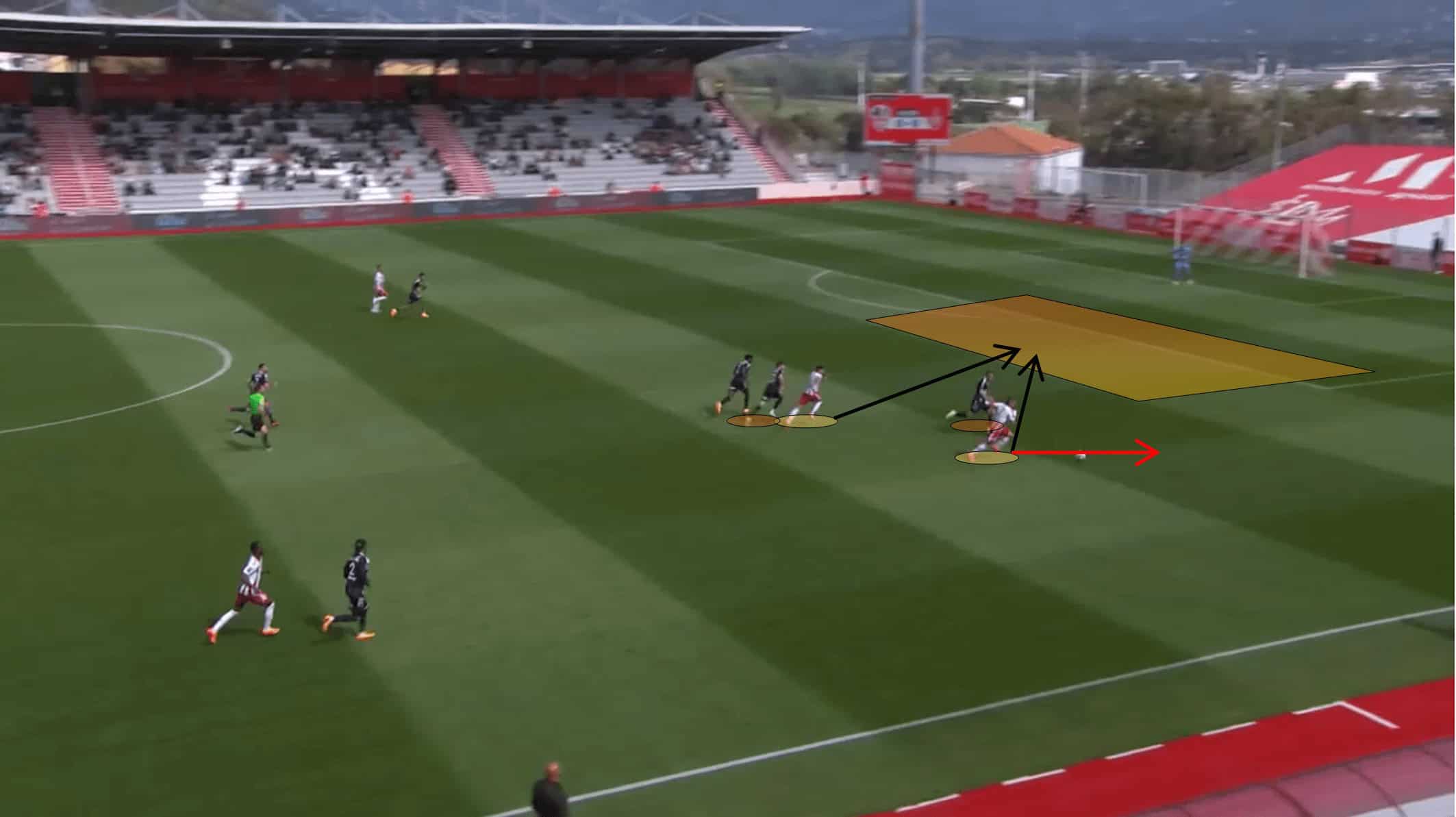
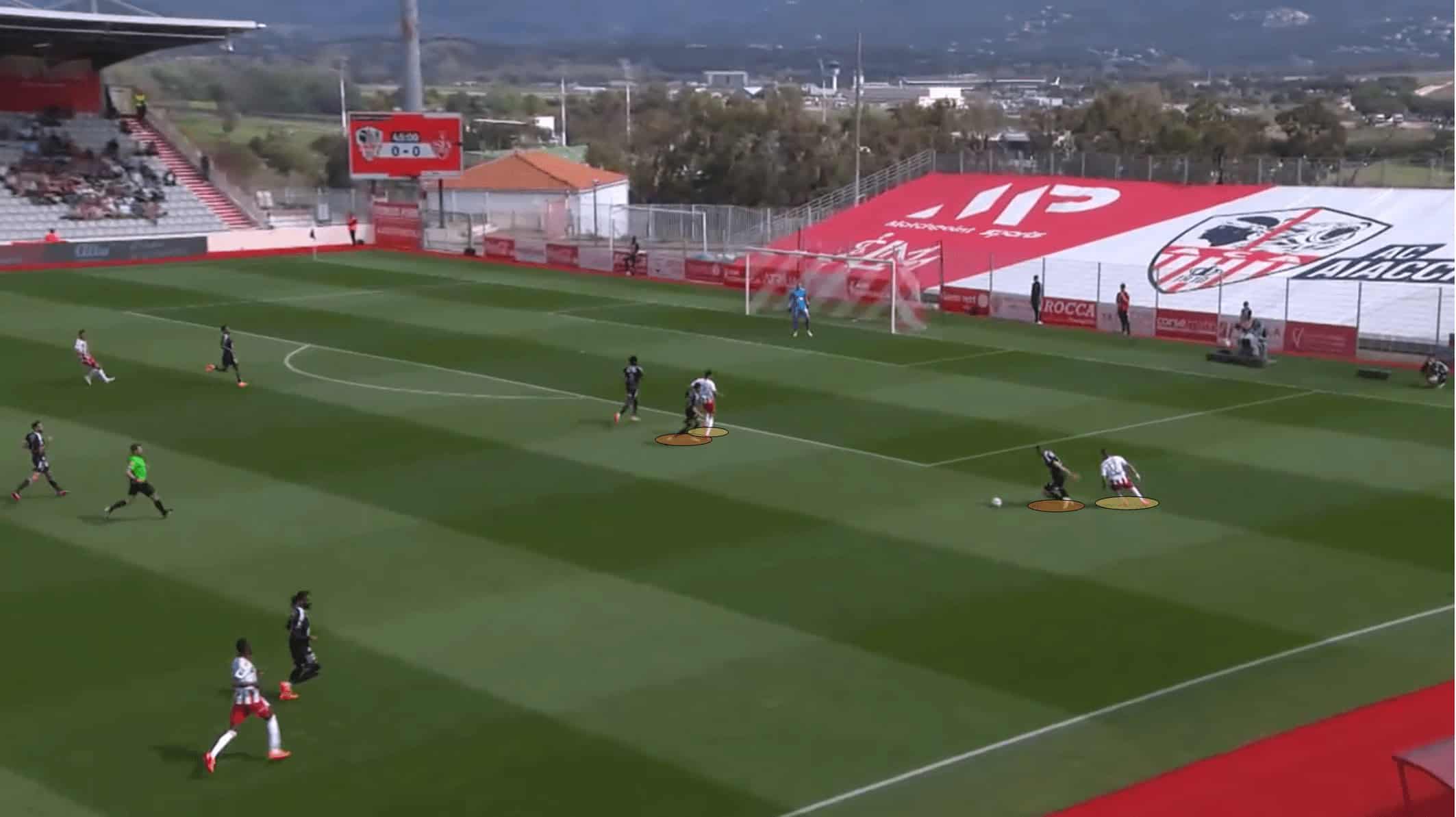
Lack of club financial investment
This is a more financial subject, but we found it important to talk about it due to the high correlation between money and the results in football nowadays.
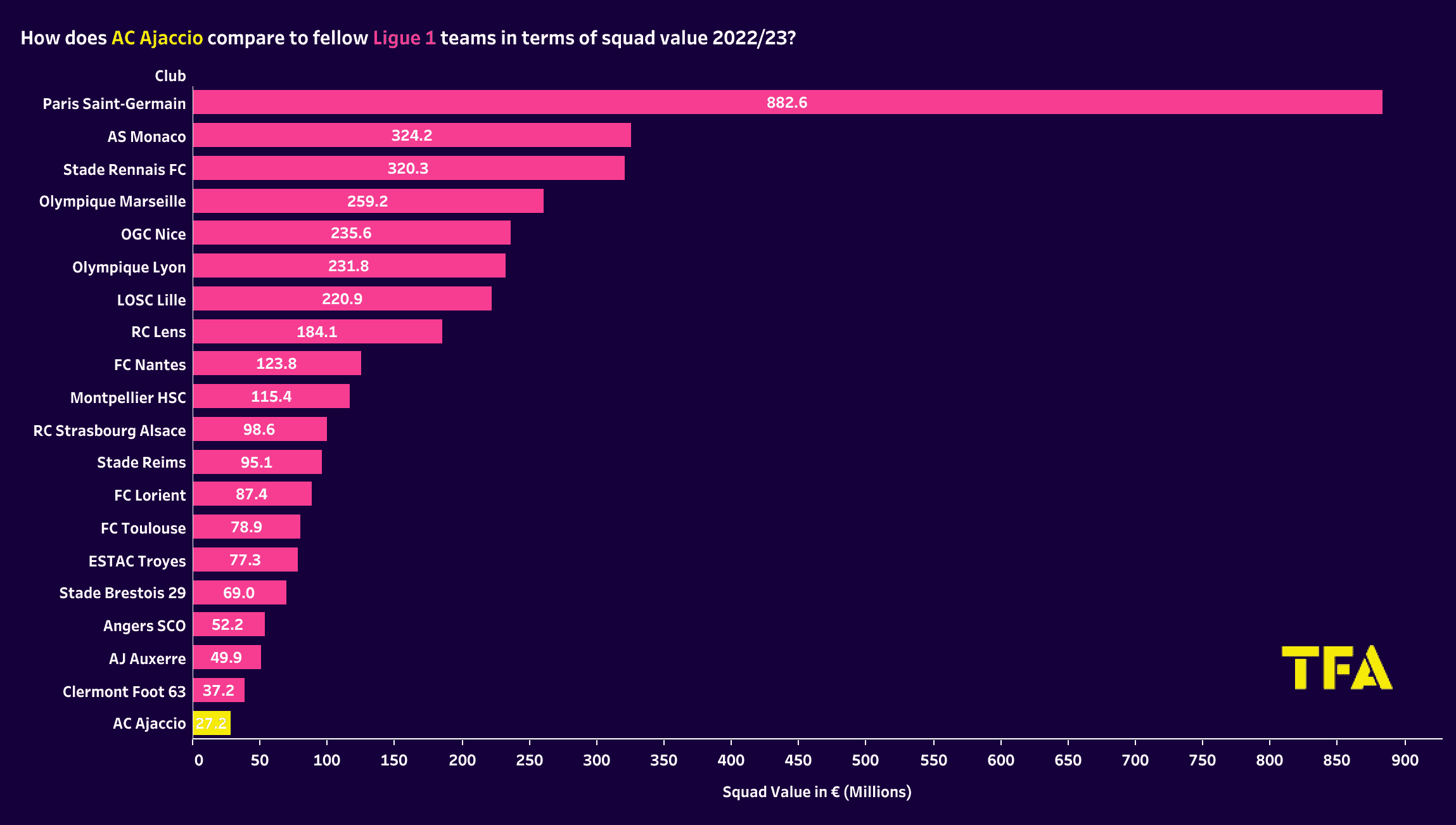
As we can see right above, Ajaccio stands at the bottom of Ligue 1 concerning squad value, with a value of just 27.2 million euros.
When you are at the bottom of the league table regarding squad values, it is obvious that there will be difficulties in competing no matter what strategy the head coach chooses. In fact, less investment means there will be players with less quality in their attributes whether tactical, technical, mental or even physical.
For example, a crucial factor for a good offensive process is having high standards in the decision-making and without serious investment, Ajaccio shows clear concerns in this topic. Besides tactical attributes, technical features are also very important offensively, like for example in shooting. Indeed, this French side has only 28.86% of their shots on target, which is precise evidence of the lack of quality players in the last third of the pitch.
Creativity is also a very important mental attribute, especially to unbalance the opposition’s defenders (like in a one vs one), and in comparison with the other league sides, Ajaccio seemed less qualified in these terms.
Conclusion
As we saw in this scout report, Ajaccio failed their objectives this season due to some tactical barriers such as poor decision-making in some situations, the lack of support on the counterattack or even the low number of players in the box in a crossing situation.
However, we cannot address those issues without mentioning that this French side has the worst squad value in the whole league, and logically, this is totally related to their failed objectives. Maybe after this season, Ajaccio owners will look at their club with a different perspective, and who knows, increase their investment so that, in the future, they have more chances of being promoted and maintained for many years in the French first tier.






Comments